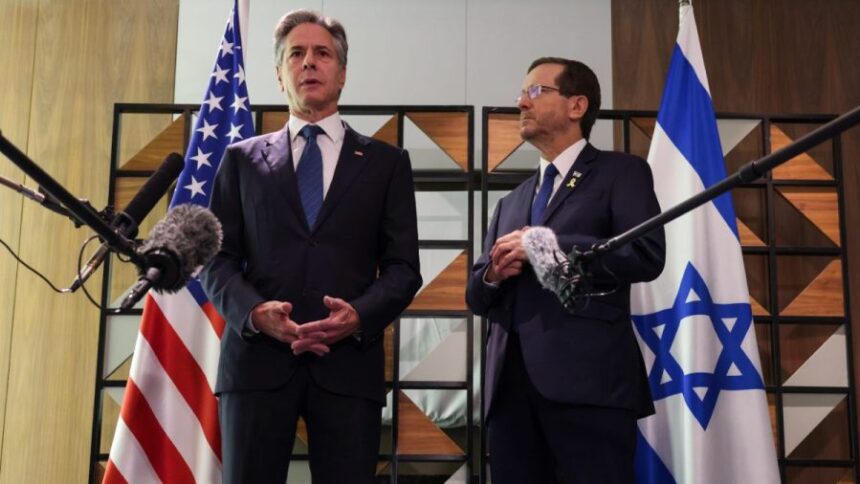(The Hill) – Secretary of State Antony Blinken said Monday that Israeli Prime Minister Benjamin Netanyahu has accepted a final bridge offer to conclude a ceasefire agreement in the Gaza Strip, placing the onus on Hamas to conclude the agreement.
“In my very constructive meeting with Prime Minister Netanyahu today, he confirmed to me that Israel accepts and supports the bridging proposal,” Blinken told a news conference at the U.S. Embassy in Jerusalem.
“Hamas must now do the same.”
The United States, along with Egyptian and Qatari mediators, is working to secure a ceasefire agreement between Israel and Hamas by the end of the week that would bring an end to more than 10 months of war that has ravaged the Middle East since the Oct. 7 Hamas terrorist attack on Israel.
An estimated 40,000 Palestinians have been killed in the ensuing war, according to the Hamas-run Gaza Strip Health Ministry, which does not distinguish between civilians and combatants.
But Hamas has largely rejected statements made during ceasefire talks over the past few weeks. The group, designated a terrorist organization by the United States, said it agreed to a ceasefire proposal presented on July 2 but accused Netanyahu of making new conditions that were unacceptable.
Hamas’ demands include a permanent ceasefire agreement and the complete withdrawal of Israeli troops from the Gaza Strip – conditions that were not included in the ceasefire framework first proposed by President Biden on May 31.
Blinken questioned Hamas’ public statements and apparent rejection of the status of ceasefire negotiations.
“We have seen public statements in the past that do not fully reflect Hamas’ current situation,” Blinken said.
“The next important step for Hamas is to accept the bridging proposal that Prime Minister Netanyahu has accepted and then work with all other parties to ensure that there is a clear understanding of how each party will actually implement the commitments they made in this agreement.”
The terms of a ceasefire agreement between Israel and Hamas are generally understood to begin with a six-week ceasefire, with Hamas releasing hostages it kidnapped from Israel during the October 7 terror attacks and Israel being obligated to release Palestinian prisoners from Israeli prisons.
During this time, the United States and its partners are expected to significantly expand the delivery of humanitarian assistance to the Palestinians in the Gaza Strip. During the six-week ceasefire, the United States, Qatar and Egypt are expected to broker further negotiations between Israel and Hamas towards a permanent end to the war.
Blinken said there was a “real sense of urgency” about the need to reach a ceasefire agreement with Israel and across the region as fighting intensifies on multiple fronts.
Hamas claimed responsibility for a suicide bomb attack in Tel Aviv on Sunday that wounded one person and warned it would “bring such operations to the forefront.” It came after an escalation of violence in the West Bank, where the Israeli government blamed extremist Israeli settlers for an attack on a Palestinian village that left one person dead.
Israel, Hezbollah and Lebanon continue to exchange rocket fire over Lebanon’s southern border, threatening a broader Iranian attack on Israel in retaliation for the alleged Israeli assassination of a top Hamas political leader in Tehran on July 31.
The United States has deployed significant military resources to the Middle East to help defend Israel in the event of an Iranian attack, and Blinken on Monday warned all parties against taking any action that would escalate the conflict.
“What is most important now is for everyone,” he said, pausing to emphasize again, “for everyone to refrain from actions that could foment further conflict, that could escalate tensions and lead to an escalation of violence and conflict.”









